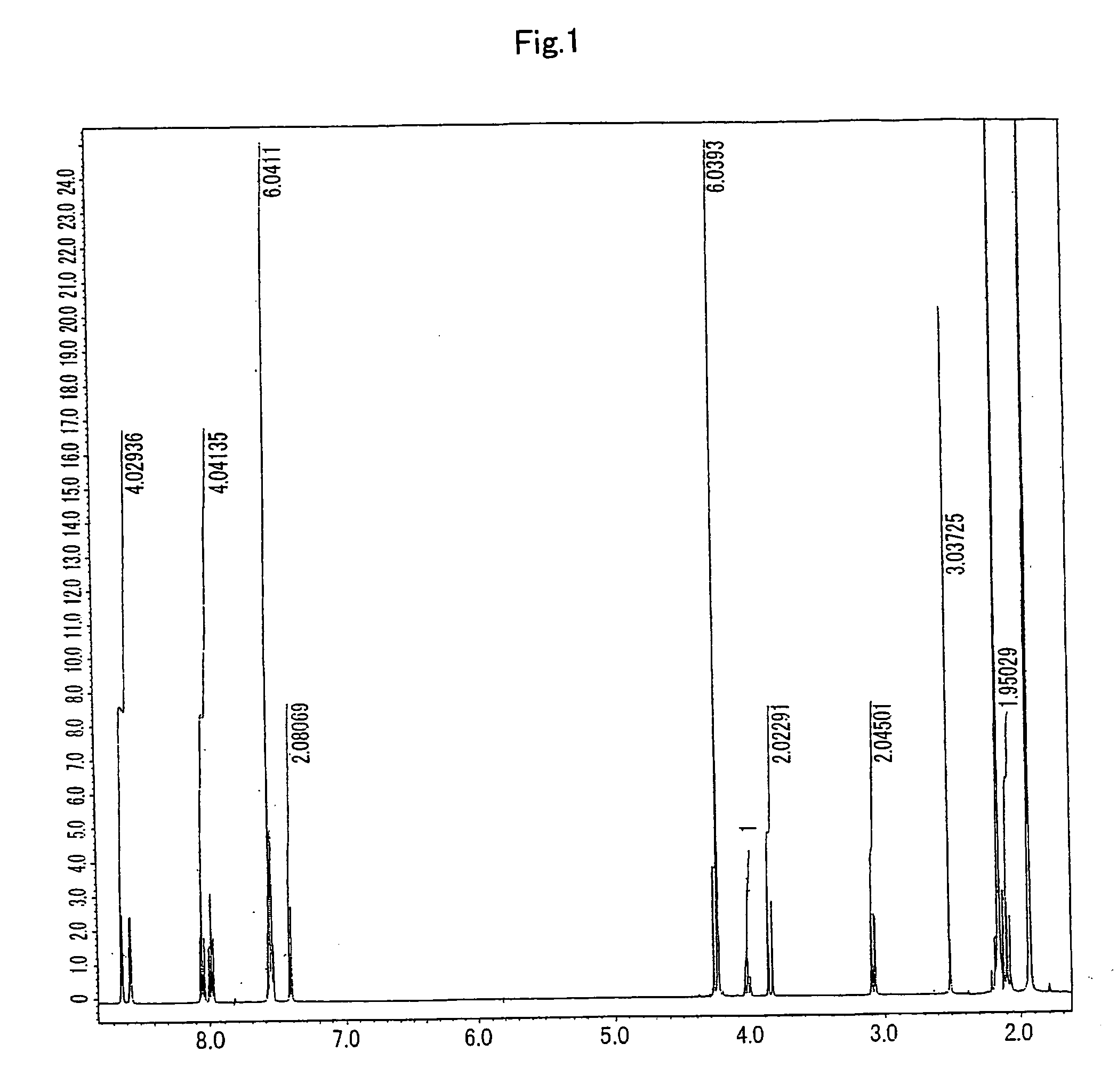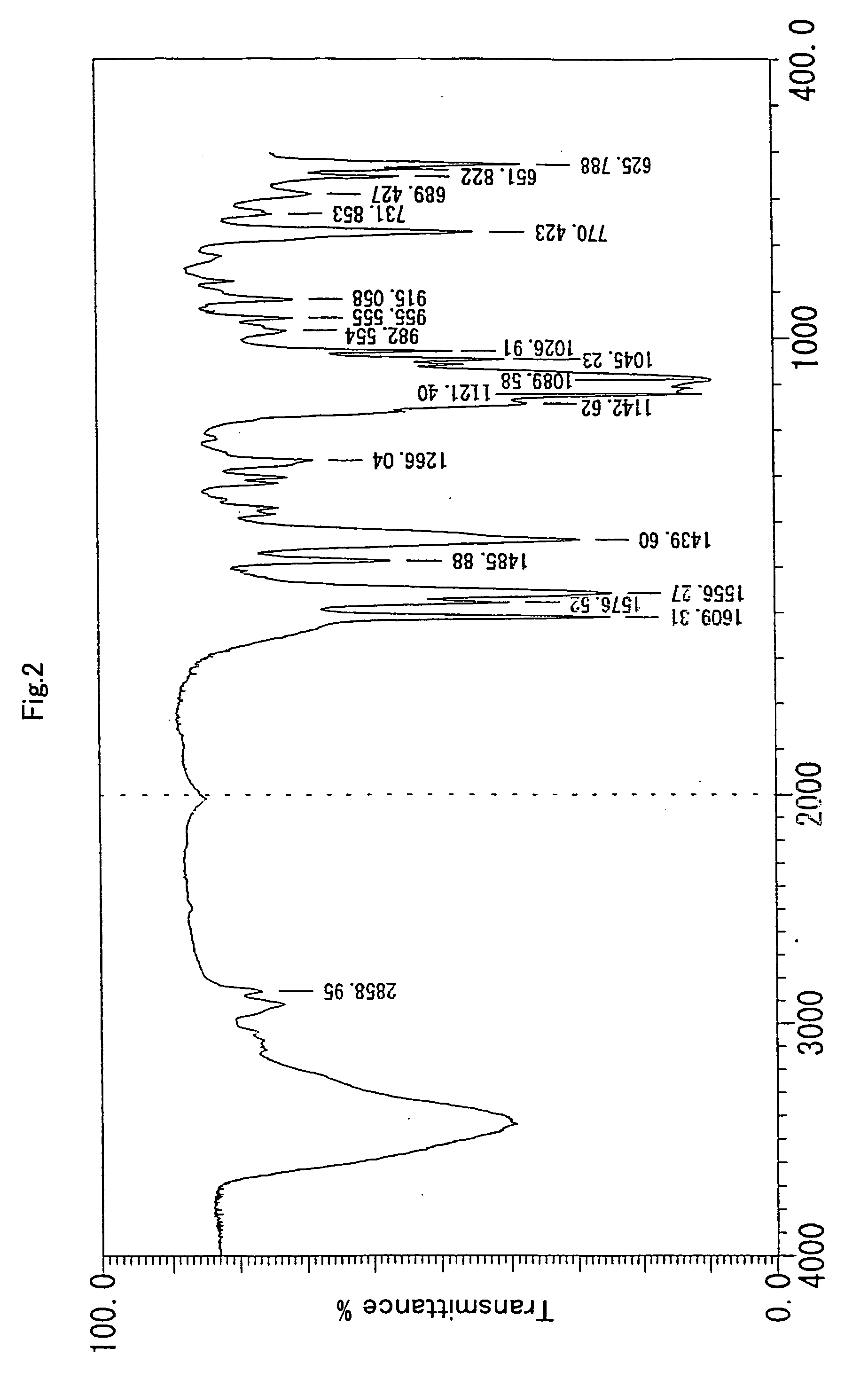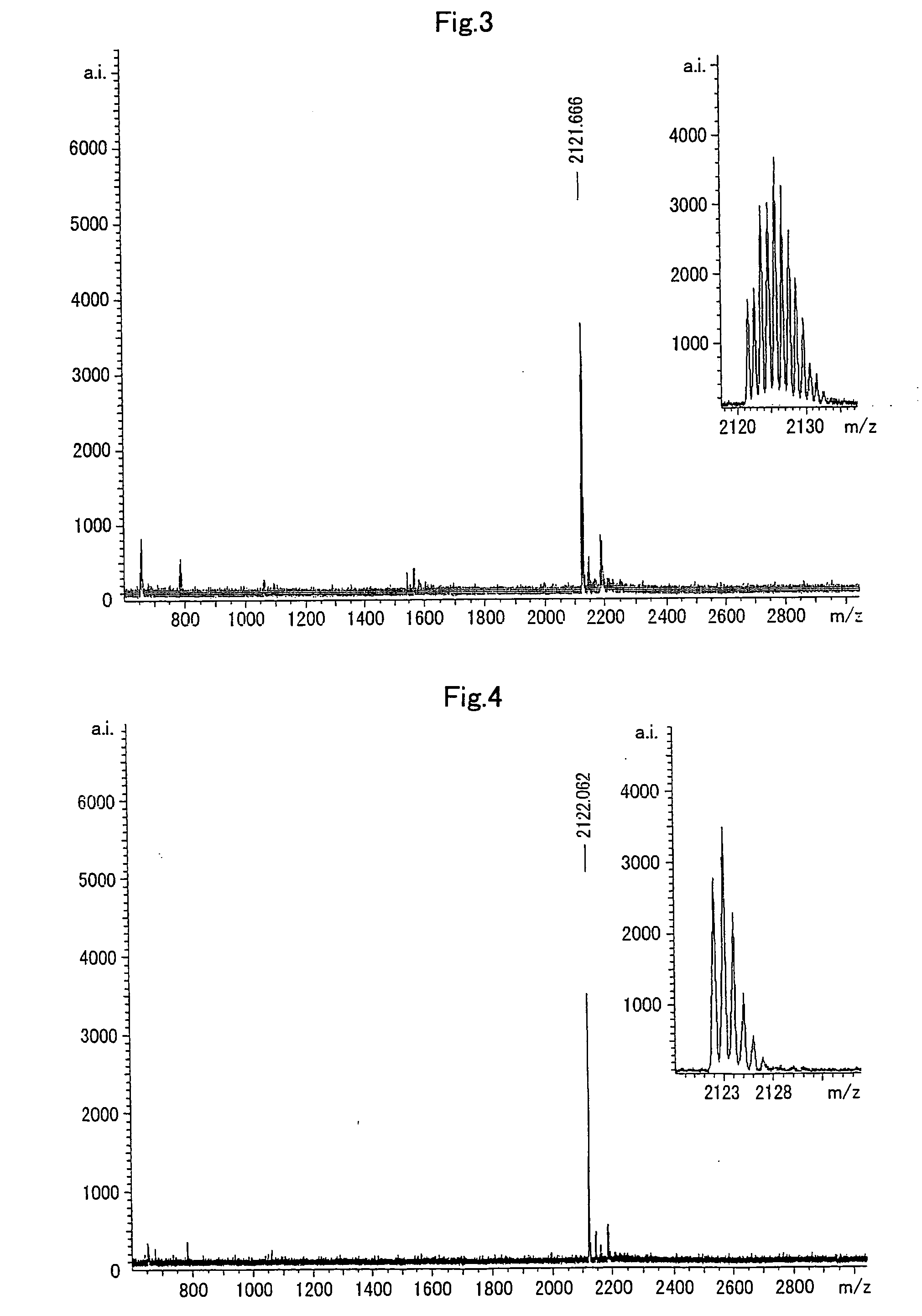Method of measuring the molecular weight of phoshoric acid monoester compound and additive for mass spectrum measurement
a technology molecular weight measurement, which is applied in the field of measuring the molecular weight of phoshoric acid monoester compound and adding to the mass spectrum measurement field, can solve the problems of difficult to obtain antibodies of the target protein of a sufficient amount, and achieve excellent preservation stability
- Summary
- Abstract
- Description
- Claims
- Application Information
AI Technical Summary
Benefits of technology
Problems solved by technology
Method used
Image
Examples
production example 1-1
Zinc Complex (Salt) According to the Present Invention
[0081]
[0082] To 65 mL of water, 902 mg (1 mmoL) of N,N,N′,N′-tetrakis[(2-pyridyl)methyl]-1,3-diamino-2-hydroxy propane (hereinafter, it is referred to as “TPAHP”) 4-perchlorate 2,5-hydrate and 160 mg (2 mmoL) of 64ZnO were added. The mixture was sonicated at 50° C. to be dissolved while 64ZnO was being dispersed. To the solution, 11.0 mL of 1.0M aqueous solution of sodium hydroxide was added, and the solution was filtered after heated for 30 minutes in a water bath at 80° C. Further, 2.0 mL of 11.0M sodium acetate aqueous solution was added dropwise into the stirring solution while the solution was heated in a water bath at 80° C. After the reaction mixture was slowly cooled at a room temperature, the precipitated colorless crystal was filtered by a glass filter, and dried at 50° C. and about 10 mmHg for 3 hours to yield 760 mg (89%) of the target compound. 1HNMR and IR spectra of the target compound were acquired. The results t...
production example 1-2
Zinc Complex (Salt) According to the Present Invention
[0083]
[0084] To 10 mL of water, 658 mg (0.73 mmoL) of TPAHP 4-perchlorate 2,5-hydrate and 100 mg (1.47 mmoL) of 68Zn were added. The mixture was sonicated at 50° C. to be dissolved while 68Zn was being dispersed. The 68Zn had a pretreatment in which 68Zn had been dissolved in 5 mL of conc. hydrochloric acid in advance, and water therein was distilled off under depressurization, and then 68Zn was further dried under depressurization by a methanol azeotrope. To the solution, 36.5 mL of 0.1M aqueous solution of sodium hydroxide was added, and the solution was filtered after heated for 30 minutes in a water bath at 80° C. Further, sodium acetate aqueous solution (which was prepared by dissolving 160 mg of sodium acetate in 5 mL of distilled water) was added dropwise into the stirring solution while the solution was heated in a water bath at 80° C. After the reaction mixture was cooled slowly at a room temperature, the precipitated c...
production example 1-3
Zinc Complex (Salt) Constituting of Natural Zinc Isotope
[0085] To TPAHP (4.39 mmoL) ethanol solution (100 mL), 10M aqueous solution of sodium hydroxide (1.0 eq) was added, and subsequently, zinc acetate (9.66 mmol, 2.2 eq) was added. The solvent was distilled off under depressurization to obtain a brown oil-like residue. The residue was dissolved by adding 10 mL of water. Then, while the residue was being heated, 1.0M sodium perchlorate solution (3.0 eq) was added dropwise into therein to obtain a precipitated creamy-white crystal. The crystal was filtered and dried by heating to yield 2.99 g (79%) of the target compound which was slightly brownish-yellow powder. It was confirmed by 1H-NMR (400 MHz), 13C-NMR (100 MHz) and IR that the obtained result was the target compound.
[0086]1H-NMR (DMSO-D6, 400 MHz): δ 2.04(2H, dd, J=12.1 and 12.4 Hz, HC-1,3), 2.53(3H, s, HC-35), 3.06(2H, dd, J=12.1 and 12.3 Hz, HC-1,3), 3.74(1H, t, J=10.4 Hz, HC-2), 4.02-4.34(82H, m, HC-5,13,20,27), 7.54-7.6...
PUM
 Login to View More
Login to View More Abstract
Description
Claims
Application Information
 Login to View More
Login to View More - R&D
- Intellectual Property
- Life Sciences
- Materials
- Tech Scout
- Unparalleled Data Quality
- Higher Quality Content
- 60% Fewer Hallucinations
Browse by: Latest US Patents, China's latest patents, Technical Efficacy Thesaurus, Application Domain, Technology Topic, Popular Technical Reports.
© 2025 PatSnap. All rights reserved.Legal|Privacy policy|Modern Slavery Act Transparency Statement|Sitemap|About US| Contact US: help@patsnap.com



